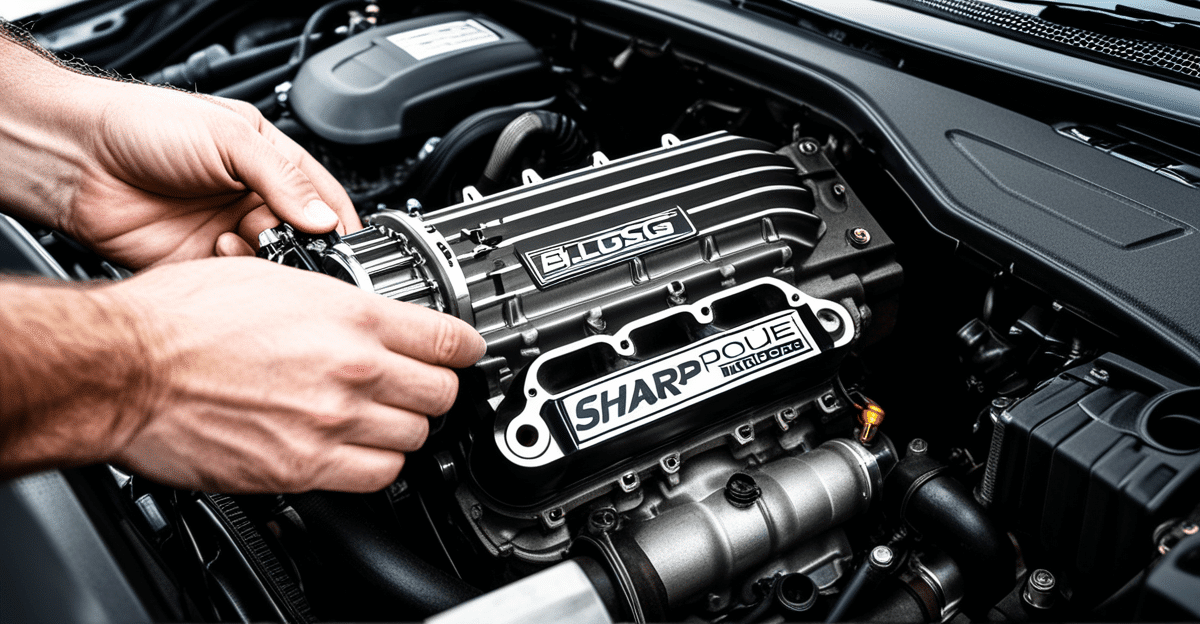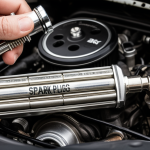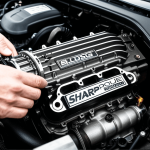Understanding Engine Torque in UK Vehicles
Engine torque basics reveal how rotational force generated by the engine influences a vehicle’s performance. Torque is measured in Newton metres (Nm) and indicates an engine’s ability to perform work, directly affecting acceleration, towing capacity, and everyday driving comfort. In UK vehicle engine power discussions, torque often complements horsepower, but it’s torque that delivers immediate pulling power, especially useful for heavier vehicles like vans or SUVs common on UK roads.
Torque measurement explained involves capturing the twisting force on the engine’s crankshaft. Devices like dynamometers provide precise readings, enabling assessment of how efficiently an engine converts fuel into usable power. Variations in torque characteristics among UK vehicle types depend on engine design; diesel engines typically provide higher torque at lower revs compared to petrol engines. This trait makes them favourable for towing or carrying heavy loads.
A lire aussi : Complete Guide to Reviving Iconic British Car Interiors: Essential Tips for Restoration Enthusiasts
For everyday UK drivers, understanding engine torque basics helps clarify why some cars feel more responsive or stronger when climbing hills or merging onto motorways. High torque values mean quicker initial acceleration, essential for urban driving scenarios and motorway overtakes. It’s a key factor influencing how a vehicle performs under different driving conditions and loads.
Understanding Engine Torque in UK Vehicles
Engine torque basics define torque as the rotational force an engine produces, measured in Newton-meters (Nm) in the UK. Its significance lies in influencing a vehicle’s ability to accelerate, tow, and handle everyday driving demands. In simplest terms, torque determines how much “pulling power” your engine has at any given moment.
En parallèle : The Ultimate Guide to Safely Installing Turbochargers in UK Cars: Expert Insights and Best Practices
UK vehicle engine power varies among types. For example, diesel engines common in many UK cars generally provide higher torque at lower RPMs than petrol engines. This characteristic translates to better towing and smoother drivability in urban settings. Conversely, petrol engines may offer faster acceleration but typically generate less torque at low speeds.
Torque measurement explained involves assessing this force during engine operation using specialized tools that record torque output under realistic conditions. This insight helps drivers understand how their vehicle responds in different scenarios, such as motorway overtaking or hill climbs.
Understanding torque is crucial because it directly affects a vehicle’s performance in practical terms—whether hauling heavy loads, merging onto busy roads, or navigating hilly UK terrain. The right balance of torque and horsepower ensures optimal driving experience tailored to specific vehicle uses.
Essential Tools and Equipment for Torque Testing
Accurate torque testing tools are vital for assessing engine performance in UK vehicles. The most common tool is a torque wrench, which precisely measures the turning force applied to bolts and engine components. For professional UK automotive equipment, selecting a torque wrench that aligns with vehicle specifications is crucial. Different vehicles require distinct torque ranges; hence, adjustable torque wrenches offer flexibility.
Other essential tools include dynamometers for measuring engine torque output directly. These devices provide detailed insights by simulating engine load conditions, allowing for comprehensive torque measurement explained with high accuracy.
Maintenance and calibration of torque testing tools ensure reliable results. Regular calibration against certified standards prevents errors caused by wear or mechanical drift. In the UK, adherence to calibration schedules maintains compliance with industry norms.
In summary, effective torque testing depends on:
- Choosing torque wrenches matching UK vehicle requirements
- Using approved dynamometers for direct torque measurement
- Maintaining and frequently calibrating equipment for precise readings
This approach guarantees trustworthy data, aiding mechanics and engineers in optimizing UK vehicle engine power and performance confidently.
Essential Tools and Equipment for Torque Testing
Selecting the right torque testing tools is crucial for precise torque measurement in UK vehicles. Among these, the torque wrench selection stands out as a key decision. UK automotive equipment must meet stringent standards to ensure accuracy—especially since vehicle manufacturers specify tight torque tolerances for components such as wheel nuts or engine bolts.
When choosing a torque wrench, consider factors like measurement range, resolution, and calibration capability. Tools with digital displays often provide better precision and easier reading. Mechanical click-type wrenches remain popular for simplicity and reliability but require regular calibration to maintain accuracy.
Calibration itself is vital; without it, torque readings can drift over time, leading to incorrect torque application. UK automotive workshops often follow schedules recommended by manufacturers or regulatory bodies, combining calibration with routine maintenance. Keeping torque testing tools in good condition guarantees consistent UK vehicle engine power assessments and promotes safety.
Other essential equipment includes dynamometers for dynamic torque measurement and sensor-based devices that capture real-time engine output. Each tool’s role complements the overall objective: delivering reliable and repeatable torque data that drivers and technicians can trust.
Understanding Engine Torque in UK Vehicles
Delving into engine torque basics, torque is the force that causes an engine’s crankshaft to rotate, measured in Newton-metres (Nm). This rotational force is vital as it directly affects a vehicle’s ability to accelerate, tow, and maintain responsiveness under load. In the UK, where diverse driving conditions exist—from dense urban areas to hilly countryside—the significance of torque cannot be overstated.
Different UK vehicles exhibit varying torque characteristics. For instance, diesel engines, popular in many UK vans and SUVs, produce higher torque at lower RPMs, making them ideal for towing and carrying heavy loads. Petrol engines, however, typically generate peak torque at higher revs, which may benefit spirited acceleration but offer less immediate pulling power.
Torque measurement explained often focuses on how this force translates to real-world performance. Higher torque means brisker responsiveness when merging onto motorways or climbing steep UK hills. Conversely, a vehicle with lower torque may feel sluggish under similar conditions. Understanding this helps UK drivers choose cars that suit their practical needs, whether that means quicker off-the-line acceleration or enhanced towing capacity.
Step-by-Step Torque Testing Procedures for UK Vehicles
Accurate torque testing methods start with thorough vehicle preparation. Begin by securing the vehicle safely on a flat surface and disconnecting the battery to prevent electrical hazards. Clear the wheel area or engine parts involved in measurement to allow unobstructed access for tools.
The step-by-step torque measurement process involves selecting appropriate torque testing tools suited for the specific UK vehicle. Attach the torque wrench or dynamometer to the component or engine part, then apply force gradually until reaching the target torque value. Recording the exact measurement promptly is essential to ensure accuracy.
Next, repeat the measurement to verify consistency, as slight variations can indicate issues with tool calibration or component condition. During UK automotive procedures, technicians must also note ambient conditions like temperature, which can influence readings.
Interpreting torque test data requires comparing readings against manufacturer specifications to confirm engine performance aligns with standards. Deviations might signal excessive wear or improper installation.
In summary, careful setup combined with precise application and diligent recording form the backbone of effective torque testing methods. This approach helps maintain optimal UK vehicle engine power and ensures reliable, repeatable results in everyday use.
Understanding Engine Torque in UK Vehicles
Engine torque basics revolve around the rotational force an engine produces, directly influencing UK vehicle engine power. Torque is crucial because it determines how much force is available to move the vehicle, impacting acceleration, towing capacity, and everyday drivability. In the UK, where road conditions and vehicle usage vary widely, understanding torque helps drivers select cars that fit their needs.
Torque measurement explained involves quantifying this force, usually in Newton-metres (Nm). The value shows an engine’s ability to generate pulling power at different speeds. For instance, diesel engines, common in UK vehicles, typically provide higher torque at lower RPMs, making them ideal for heavy loads and towing. Petrol engines, conversely, often have peak torque at higher rev ranges, favouring quicker acceleration.
This difference is vital for UK drivers to grasp. Torque affects how a vehicle performs on motorways, climbs hills, or handles stop-start city traffic. Higher torque means better responsiveness during overtaking or carrying loads. Understanding these dynamics allows consumers to choose vehicles that balance power and efficiency suited to British driving conditions.
Understanding Engine Torque in UK Vehicles
Engine torque basics define torque as the rotational force that causes an engine’s crankshaft to turn, measured in Newton-metres (Nm) in the UK. This force directly influences UK vehicle engine power, determining how well a vehicle accelerates, tows, and performs under normal driving conditions.
Why does torque matter? Greater torque means stronger pulling power, essential for tasks like towing trailers or climbing steep hills, common driving scenarios in the UK. For example, diesel engines in many UK vehicles produce higher torque at low RPMs, offering better towing capability and smoother urban driving. Petrol engines generally develop peak torque at higher revs, providing brisk acceleration but less immediate pulling force.
Torque measurement explained helps clarify these differences by quantifying the twisting force output during engine operation. This measurement allows technicians and drivers to assess how well an engine meets performance expectations.
Understanding these fundamentals empowers UK drivers to choose vehicles tailored to their needs—whether requiring quick acceleration for motorway overtakes or robust torque for heavy loads—and to better appreciate how engine torque shapes everyday driving experiences.
Understanding Engine Torque in UK Vehicles
Engine torque basics define torque as the twisting force produced by an engine’s crankshaft, crucial for translating power into motion. Measured in Newton-metres (Nm), torque directly impacts UK vehicle engine power, influencing acceleration, towing, and driving responsiveness.
Different UK vehicle types exhibit distinct torque characteristics. Diesel engines commonly found in UK commercial vehicles deliver high torque at low RPMs, enabling efficient towing and load carrying. Petrol engines, by contrast, generate peak torque at higher RPMs, favouring quicker acceleration but offering less low-end pulling power.
Drivers often ask, “Why is torque more important than horsepower in daily UK driving?” The answer lies in torque’s immediate availability at lower speeds, improving drivability on variable terrain like UK hills or congested urban roads. Additionally, towing heavy trailers or caravans common in the UK requires strong torque rather than just horsepower.
Torque measurement explained involves using instruments such as dynamometers and torque wrenches to quantify this force precisely. This data reveals how well an engine performs under different conditions, aiding drivers and technicians in selecting or tuning vehicles that optimise UK vehicle engine power for specific needs such as fuel efficiency or load handling.
Understanding Engine Torque in UK Vehicles
Engine torque basics define torque as the force causing an engine’s crankshaft to rotate, crucial for UK vehicle engine power. Torque measurement explained involves quantifying this twisting force in Newton-metres (Nm), revealing how much pulling power the engine delivers at different speeds. This measurement is essential to understanding vehicle performance, especially in acceleration and towing.
Different UK vehicles exhibit distinct torque characteristics. Diesel engines typically generate higher torque at lower RPMs, making them better for towing trailers or carrying heavy loads—common UK driving demands. Petrol engines, while often less torquey at low revs, produce peak torque at higher speeds, contributing to faster acceleration but less immediate pulling force.
Torque’s relevance becomes clear in everyday driving: it determines how quickly a vehicle can merge onto motorways or climb hills. High torque enhances responsiveness, particularly under load or on hilly UK terrain. Understanding engine torque basics thus helps drivers assess vehicle suitability for specific uses and interpret performance claims. For example, torque testing clarifies differences between models and assists in optimizing driving style to make the most of available power.
Understanding Engine Torque in UK Vehicles
Engine torque basics refer to the rotational force an engine produces to turn the crankshaft, measured in Newton-metres (Nm). This force is fundamental to UK vehicle engine power, as it determines how effectively a vehicle accelerates, tows, and reacts in everyday driving. For example, higher torque enables smoother hill climbs and more responsive overtaking on motorways.
In the UK, different vehicle types display unique torque characteristics. Diesel engines, prevalent in many vans and SUVs, generate substantial torque at low RPMs, making them ideal for towing heavy loads or managing stop-start urban driving. Petrol engines, by contrast, often peak at higher RPMs, favouring rapid acceleration but offering less immediate pulling power.
Torque measurement explained involves tools like dynamometers that simulate real driving conditions to capture torque output precisely. This data helps technicians and drivers understand engine performance under varying loads and speeds, crucial for selecting the right vehicle or tuning it effectively. Given UK roads’ diverse demands—from city traffic to rural hills—appreciating torque’s role lets drivers make informed decisions about their car’s capability and suitability.









